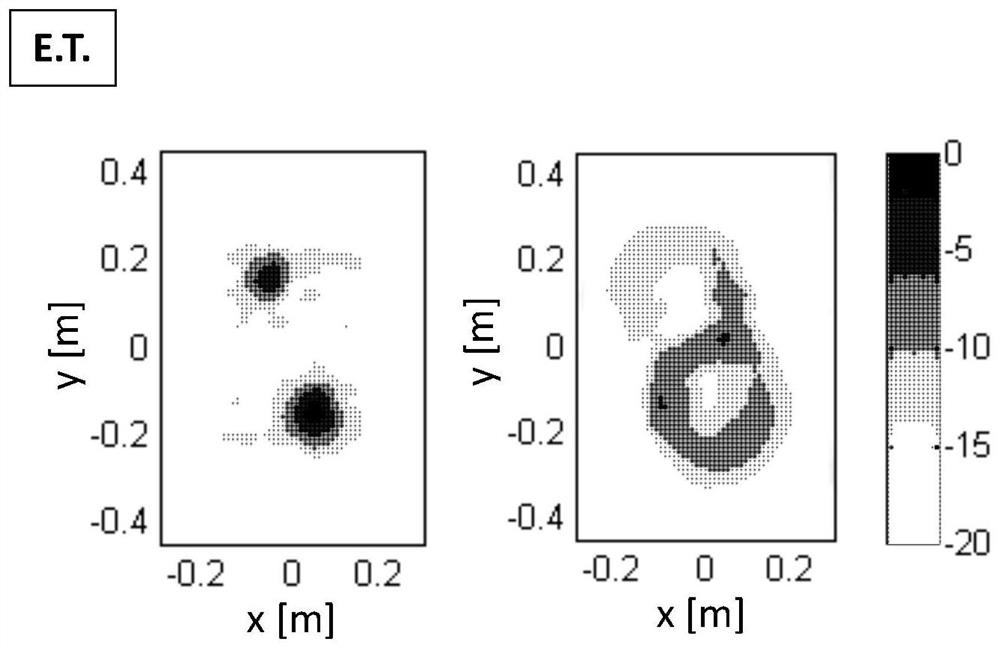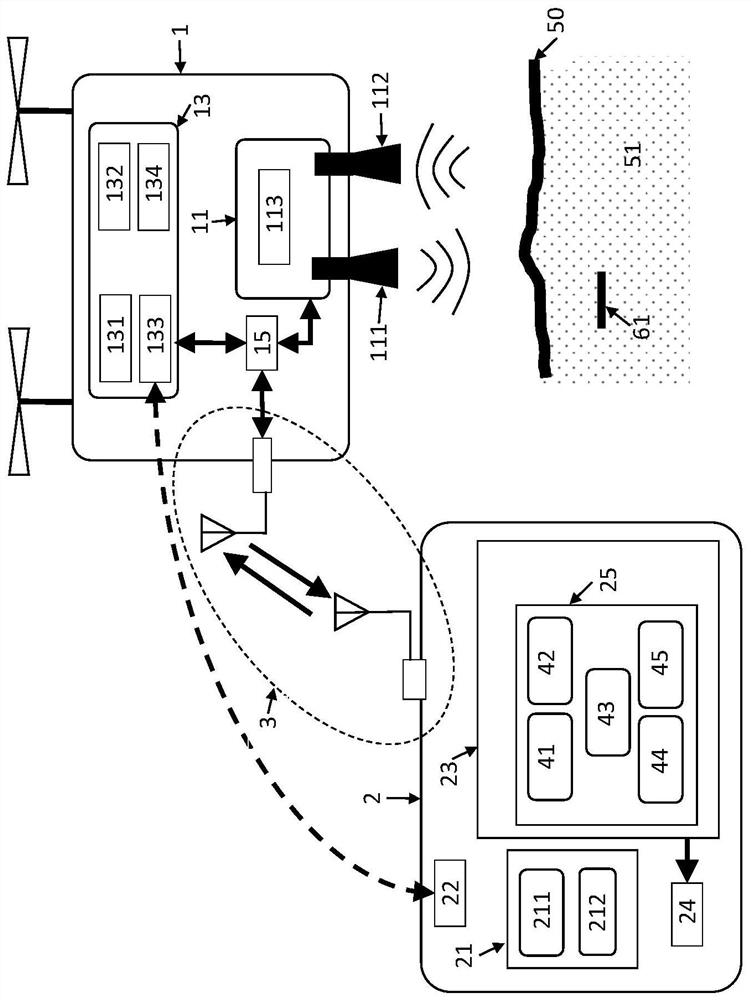Airborne system and method for detection, localization and image acquisition of buried objects, method of characterizing subsoil composition
A technology of airborne system and positioning system, which is applied in multiple system fields to achieve good target detection effect
- Summary
- Abstract
- Description
- Claims
- Application Information
AI Technical Summary
Problems solved by technology
Method used
Image
Examples
example 1
[0155] A first embodiment of the invention is based on the use of a single flight module (1) consisting of an unmanned aerial vehicle, in particular a multi-rotor aircraft, more specifically an octo-rotor aircraft, and its corresponding controller and battery pack . The octorotor used together with the controller and batteries has a maximum take-off weight of 6 kg and a payload capacity of 1.5 kg. This payload capacity is used to fit and integrate the following elements into the octocopter:
[0156] - flight control unit (15), implemented using a microcontroller (Raspberry Pi type) and programmed to collect information, control flight parameters of the flight module (1) from the radar unit (11) and the positioning and guidance system (13), And exchange information with the ground station (2). The octocopter includes a three-axis stabilization system mounted with a radar unit (11) to partially compensate for oscillations generated during flight.
[0157] - IEEE 802.11 (Wi-Fi...
example 2
[0168] For this example, the system described in Example 1 was used, but the helical receiver antenna (112) was replaced by a two-element array receiver antenna (112): one consisting of a right-handed circularly polarized helical antenna, Another element consisting of a left-handed circularly polarized helical antenna, both with gain and S11 similar to the transmit antenna. Each element of the array is connected to a switch that allows acquisition of the received radar signal in one element of the array or another element of the array.
example 3
[0170] To achieve this, a system similar to that described in Example 1 is used, but with two flight modules (octorotors): the flight module (1), which is a flight launcher with a radar unit (11) that transmits radar signals a receiver module (101); and another flight module (1), which is a receiver flight module (102) with a radar unit (11) for capturing radar signals.
[0171] The synchronization between the transmitter flight module (101) and the receiver flight module (102) is realized through the communication device, and the communication device includes the radar module (113) on the transmitter flight module (101) and the receiver flight module (102) A real-time two-way radar communication system (120) between the radar modules (113) on the system. The communication system is included within the functionality of the radar module (113) (PulsOnP410) so that this existing functionality can be used to extend the system to multistatic mode.
[0172] Position the transmitter...
PUM
 Login to View More
Login to View More Abstract
Description
Claims
Application Information
 Login to View More
Login to View More - R&D
- Intellectual Property
- Life Sciences
- Materials
- Tech Scout
- Unparalleled Data Quality
- Higher Quality Content
- 60% Fewer Hallucinations
Browse by: Latest US Patents, China's latest patents, Technical Efficacy Thesaurus, Application Domain, Technology Topic, Popular Technical Reports.
© 2025 PatSnap. All rights reserved.Legal|Privacy policy|Modern Slavery Act Transparency Statement|Sitemap|About US| Contact US: help@patsnap.com



